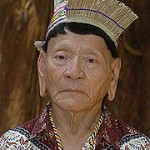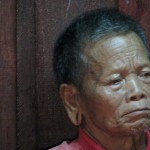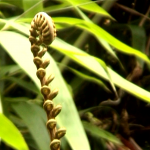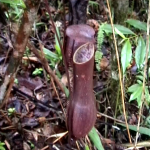 Thanks to the folks at EngageMedia.org it’s now possible to subtitle Sarawak Gone in any of the languages supported by the Universal Subtitles initiative. How does it work? Best way to find out is to give it a go. Select any Sarawak Gone episode and click on the subtitle button. This will take to a step-by-step guide and all the tools you’ll need to add your captions into an open pool of others.
Thanks to the folks at EngageMedia.org it’s now possible to subtitle Sarawak Gone in any of the languages supported by the Universal Subtitles initiative. How does it work? Best way to find out is to give it a go. Select any Sarawak Gone episode and click on the subtitle button. This will take to a step-by-step guide and all the tools you’ll need to add your captions into an open pool of others.
Category Archives: News
Photo finish
Explore the entire collection of stills from the series, from its inception to completion.
International debut at AGITPROP
From 2 – 4 July AGITPROP film festival goes live for the first time in Manila, Philippines. Sarawak Gone will debut there.
Series completed, but it ain’t over yet
 There’s a kind of anti-climax when one gets to the end of a project, but not this one. Despite completing the last official episode of this series, it’s far from over.
There’s a kind of anti-climax when one gets to the end of a project, but not this one. Despite completing the last official episode of this series, it’s far from over.
As I write The Headman is gradually populating personal walls on Facebook, various blogs and websites in a bid to keep the issues it raises not only in public view, but that we remember the legacy left by Kelesau Naan who disappeared this week, three years ago.
Kelesau was known to have described the Penan as “mushrooms of the forest”. This statement resonates with a deep and profound knowledge of the connectedness of all things. As mushrooms grow from spore beneath the surface of the soil, so too do humans grow, feed and thrive from the forest floor to the canopies that protect them.
I learnt a great deal during my brief stay in Long Kerong. The Penan take nothing for-granted. Their needs are simple by our standards, but their way of life is immeasurably rich. For those that have seen life beyond the forest, they say this world robs them of their independence and way of life. That’s not to say they’re entirely against development. It wouldn’t take much to improve their standard of living. Solar power for lighting and refrigeration, improved and frequent access to health services and teachers that aren’t afraid to venture into and live amongst these people in the forests. But remove the Penan from the forest, both the people and tong tana, the closest term the Penan have for forest, will suffer.
Ethnocide
What we are witnessing with the removal of indigenous peoples from their customary lands is ethnocide. The anthropologist David Maybury-Lewis describes this as “the destruction of a people’s way of life” and notes that it’s considered acceptable and “appropriate” policy by the Malaysian government.
It takes only a single generation for entire communities to be denuded of their traditional knowledge, customs and way of life. I’ve seen it. In 20 years of work in Sarawak, supporting the efforts of my colleagues there, travelling to far flung communities and seeing the despair in the faces of elderly Dayaks, the loss to them and us is immeasurable.
Since 1999, when I started shooting there, over 20% of the remaining 25% of native rainforests I’d flown over, driven through or traced on maps has been torn out, leaving the forest to the scourge of palm oil where nothing but rats and snake survive. The rattan, forest foods and medicines, impossible to comprehend volume of species, both flora and fauna, and as ethnobotanist Wade Davis laments, a unique vision of life is being lost forever.
The prognosis may be dire, but I can only hope and persist in my work and support that of my colleagues, that it may not be as tragic as it seems today.
The Headman in post-production
 The next Sarawak Gone series, The Headman, is finally in post-production. It was shot in and around the Penan village, Long Kerong, located in the Ulu Baram. It was to be one of the more significant journeys I had made and certainly one that imprinted a deeper connection with Sarawak’s forest communities, and indeed the forest itself.
The next Sarawak Gone series, The Headman, is finally in post-production. It was shot in and around the Penan village, Long Kerong, located in the Ulu Baram. It was to be one of the more significant journeys I had made and certainly one that imprinted a deeper connection with Sarawak’s forest communities, and indeed the forest itself.
The Headman is inspired by Kelesau Naan, the former Headman of Long Kerong, allegedly murdered whilst hunting with his wife in October 2007. His remains were found two months later, spread across a river-bed where it was known he had been headed on the day he went missing.
This series traces the life of Kelesau Naan through his son, Nick Kelesau, and the village and forests he had long fought to protect leading to the tragic circumstances of his disappearance.
I’m planning to have at least the first key episode completed by October 23, three years to the day Kelesau is said to have lost his life.
The Dam completed!
 The first series, The Dam, has been completed. The last episode, You Can’t Eat The Road, went online late April. It turned out to be the most complex to cut. I had a lot of material to work with, but given this episode consists entirely of testimonials and interviews it became quite an effort to massage hours of material into ten minutes.
The first series, The Dam, has been completed. The last episode, You Can’t Eat The Road, went online late April. It turned out to be the most complex to cut. I had a lot of material to work with, but given this episode consists entirely of testimonials and interviews it became quite an effort to massage hours of material into ten minutes.
With production advisor, David Nerlich’s assistance, I divided the micro-doc into four scenes taking quotes from key statements, “What the Government Said Wasn’t True”, “At The Beginning We Were Told The Electricity Is Free”, The Extinguishment of Customary Rights”, and “In Our Struggle We Need To Be United”.
Gradually a narrative emerged and even though this episode would make more sense to Bhasa Malay speaking people, I’ve had very good response from English speaking viewers prior to it being completed. That said, one of the key points I had not stressed in this series is the fact that the Bengoh Dam is not an isolated case. Even though this final episode takes us to the Bakun Dam Resettlement Scheme, a proposed corridor of no less than 12 addition dams to meet alleged power needs. This will, no doubt, have significant impacts on the remaining Dayaks who live in Sarawak’s forests.
Mar 2010 Update
 Last night I completed the first readable draft of Episode three, We can’t eat the road. This is the last in the first series, The Bidayuh and the Dam. It’s based on discussion between a small representative group of villagers from Upper Bengoh meeting with the Iban of Rumah Agi and the Kenyah at the Bakun Resettlement Scheme.
Last night I completed the first readable draft of Episode three, We can’t eat the road. This is the last in the first series, The Bidayuh and the Dam. It’s based on discussion between a small representative group of villagers from Upper Bengoh meeting with the Iban of Rumah Agi and the Kenyah at the Bakun Resettlement Scheme.
From palm oil to dams, the story is one of exploitation, false promises and despair. It demonstrates clearly how little the present government of Sarawak cares for native customary rights and even less for the welfare of the people they are duty bound to serve and protect.
I’ve done a lot more work on the site which you will see in the general layout, the synopsis pages and very soon, a section outlining the issues and an explanation of native customary rights, or NCR.
Feb 2010 update

Work on the series began in 2008. Shooting was completed in mid-2009 and post production commenced September of that year as part of an artists in residence program I had been invited to undertake back in Australia.
At the time of writing all post-production has taken place with out a single penny, or dollar for those slighter younger than I. In-kind support has been provided by Wind & Sky Productions for their work in producing maps, titling and colour grading. I have also received considerable input from film-maker, writer and composer David Nerlich who has provided me with critical feedback to all my post-production scripts and each and every review edit.
More recently, a small number of highly skilled and supportive individuals have reviewed this site and my micro-docs offering essential feed-back and suggestions that will improve the project as it rolls out.
Sarawak Gone is the first Toy Satellite based project since 2005 – a much simpler and reflective Toy Satellite than the multi-faceted and fast paced outfit of former times.
Andrew Garton
February 2010